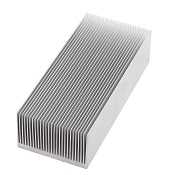How to choose the right heat sink?
Choosing the right heatsink for your computer involves considering various factors related to your specific needs and system requirements. Here’s a step-by-step guide to help you choose a suitable heatsink:
Determine Your Cooling Requirements
Consider the thermal demands of your computer components. High-power processors or graphics cards may require more robust cooling solutions compared to low-power components. Evaluate the TDP (Thermal Design Power) specifications of your components to get an idea of the heat output.
Check Compatibility
Ensure that the heatsink you choose is compatible with your motherboard and CPU socket. Heatsinks typically support specific socket types, such as Intel LGA or AMD AM4. Refer to your motherboard and CPU specifications or consult the manufacturer’s website for compatibility information.
Consider Space Limitations
Take into account the available space in your computer case. Measure the clearance between the CPU socket and the case side panel to ensure that the heatsink will fit without any interference. Additionally, check the height clearance in your case to ensure the heatsink won’t obstruct other components like RAM chips.
Determine Cooling Method
Decide whether you prefer an air-cooled or liquid-cooled heatsink. Air-cooled heatsinks are typically more affordable and easier to install, while liquid-cooled solutions offer better cooling performance but may require additional components and maintenance.
Thermal Performance
Consider the thermal performance specifications of the heatsink, such as its thermal resistance or thermal conductivity. Lower thermal resistance values indicate better heat dissipation capabilities. Reviews and benchmarks can provide insights into the performance of specific heatsink models.
Noise Considerations
If noise levels are a concern, consider heatsinks with larger, slower-spinning fans or those specifically designed for quiet operation. Check user reviews or seek recommendations for quieter cooling solutions.
Overclocking Capability
If you plan to overclock your CPU or GPU for increased performance, ensure that the heatsink you choose can handle the additional heat generated during overclocking. Look for heatsinks specifically designed for overclocking or with high TDP ratings.
Budget
Set a budget for your heatsink and explore options within that range. Heatsinks can vary significantly in terms of cost, and it’s important to find a balance between your cooling needs and budget constraints.
Reviews and Recommendations
Read reviews, watch videos, and seek recommendations from trusted sources or online communities. Real-world experiences and feedback can provide valuable insights into the performance, reliability, and ease of installation of different heatsink models.
Consider Additional Features
Some heatsinks offer additional features like RGB lighting, fan control options, or modular designs. While not directly related to cooling performance, these features can enhance the aesthetics and customization options of your system.
In short
By considering these factors, you can make an informed decision when selecting a heatsink that meets your specific cooling requirements and fits well within your computer system.

